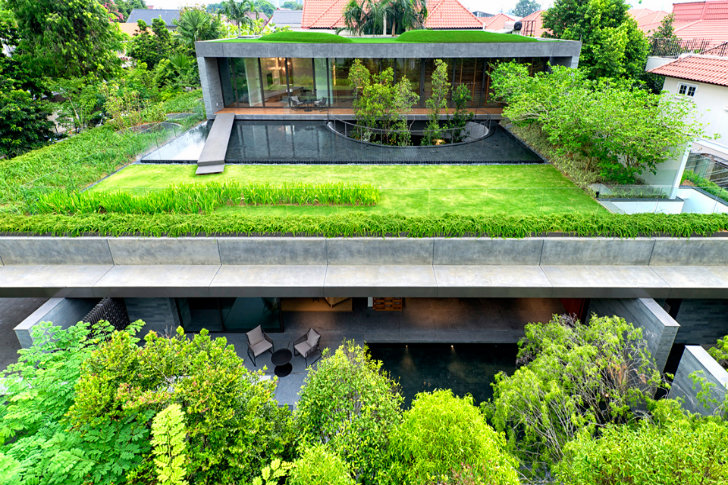Green Roofs also known as “euro roofs” have been seen gracing industrial buildings dating back as far as 1935. It has been more recently that they have been appearing on garages, bicycle shelters, car ports, porches, barns and residential homes. The greatest benefits of a green roof is to reduce stormwater maintenance, reduce energy cost, provide a biodiverse habitat, reduce the effects of urban heat islands, provide roof longevity and improve property aesthetics.
What is a green roof?
Known as “vegetated roofs or “living roofs” they are ballast roofs consisting of a waterproof membrane, growing mediums, and vegetation overlaying a traditional roof.
Benefits of a Well Designed and Maintained Green Roof:
- Stormwater Maintenance reduces the flow of stormwater from a roof by up to 65% and delays the flow rate for up to three hours.
- Reduces energy cost by keeping roofs cool by providing shade, thermal mass and insulation.
- Biodiversity Habitat is created for urban plants and animals like bird, and insects.
- Urban Heat Island effect created by air pollution and solar heat absorbent asphalt and concrete which has lead to illness even death is reduced.
- Roof Longevity last twice as long as a standard roof.
- Aesthetics of plants and flowers attract lovely hummingbirds and butterflies combining ecological the home’s inhabitants with its surrounding communities.
According to the GSA green roof report the estimated cost benefit for green roofs on commercial and public buildings provide an internal return rate of 5.2% based on a net present value of $2.7/square foot.

How do you know if this is the right idea for your home?
Knowing your structural capabilities is paramount when creating a stable functional green roof. Many green roofs involve a large amount of weight to be placed on the roofs. Understanding live and dead loads, lumber sizes and spans, wood species that their related compression capability, framing and carpentry are just a few elements to be addressed and must be determined before the process begins.
Expert knowledge of these basis five components is a must:
- Weatherproof Membrane – waterproof seals
- Root-Protection Barrier – needed only if weather protection barrier contains chemical organic materials
- Drainage Layer – creating a channel or bulky substrate
- Growing Mediums – loamy soil that is spread on top of the landscape cloth which allows water and root penetration but keep the soil in its place.
- Plants – intensive roofs have a thickness of 4 inch or greater and an extensive are thin and can support diverse plant communities with a 1 to 4 inch thickness.
The benefits truly surpass all the hard work you will put into creating your own green roof. If you would like to acquire your own “euro roof” or have any questions please contact us at info@designscapes.com.
